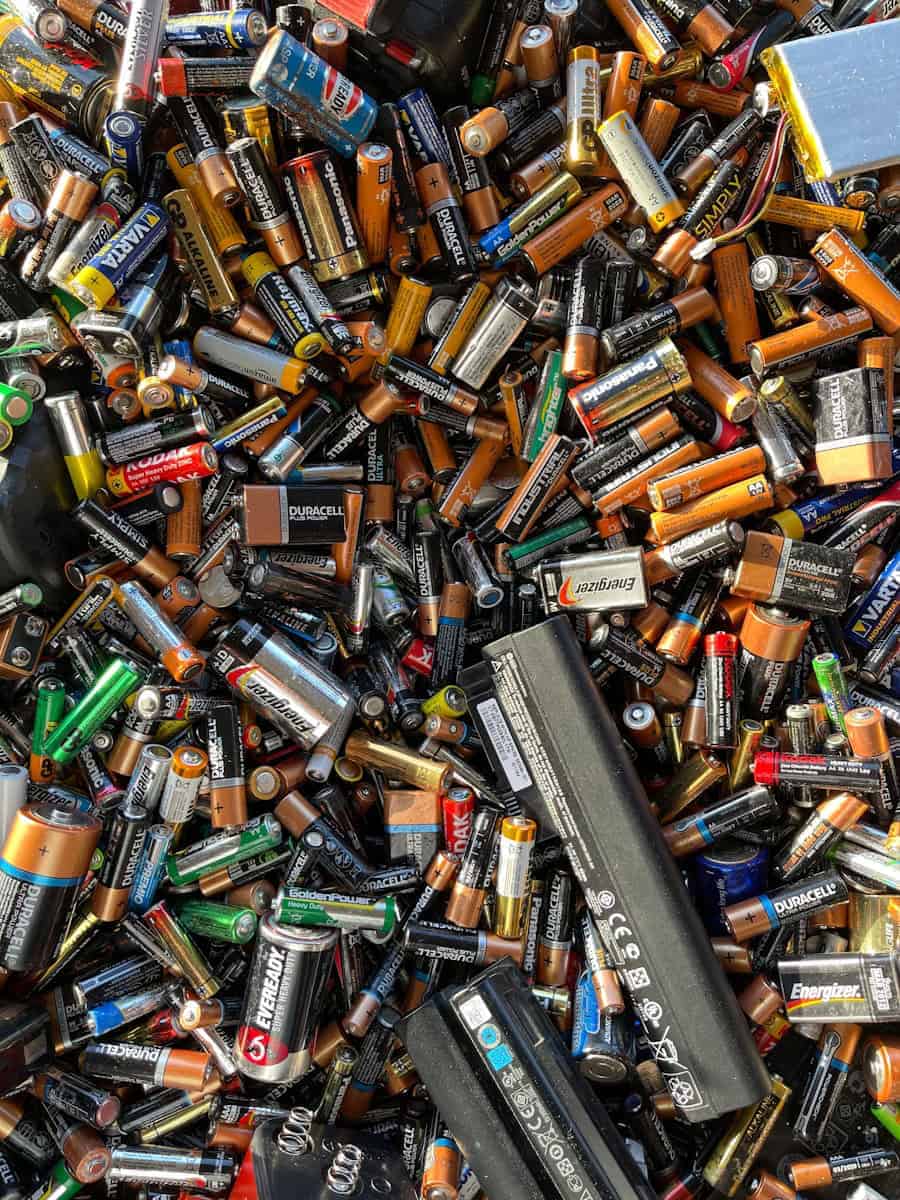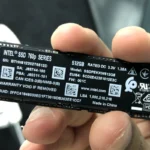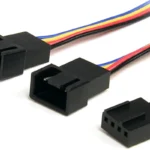The increase in technology has made life more convenient, but it has also led to a new environmental problem: electronic waste, or e-waste. Every year, millions of tons of electronic devices are thrown away, and this number is expected to keep growing. E-waste contains harmful materials that can pollute the environment and harm human health. It’s very important to dispose of and recycle e-waste properly. In this article, we will talk about why recycling e-waste is important, what items are considered e-waste, how to prepare them for recycling, and where to recycle them. By understanding these key points, you can make informed decisions about how to handle your old electronics responsibly and help the planet stay healthy.
What to Know Before You Recycle E-Waste
Most people know that you can recycle paper and cans. But did you know that you can also recycle electronics, or e-waste? It’s not the same as recycling regular waste. This article will help you learn more about e-waste and how to recycle it.
Why E-Waste Recycling Is Important
E-waste is a growing problem in the U.S. Old electronics contain harmful materials that can pollute the environment and harm our health. These materials include lead, mercury, and cadmium. By recycling e-waste, we can keep these materials out of landfills and protect our planet.
What Is Considered E-Waste?
E-waste includes any electronic device that you no longer use. This can be anything from old phones and computers to TVs and printers. Even small items like chargers and cords count as e-waste.
How to Prepare E-Waste for Recycling
Before you recycle e-waste, you need to prepare it properly. This means removing any personal information from your devices and wiping the hard drives clean. You should also remove any batteries or other hazardous materials.
Where to Recycle E-Waste
There are many places where you can recycle e-waste. Some retailers offer e-waste recycling programs. You can also find e-waste recycling centers in your community. Many cities and towns have special collection events for e-waste.
E-Waste Recycling Options
| Option | Description | Pros | Cons |
|---|---|---|---|
| Retailer Programs | Many retailers offer e-waste recycling programs, often with incentives. | Convenient, easy, may offer rewards or discounts. | May have limited item acceptance, not available everywhere. |
| E-Waste Recycling Centers | Special facilities that accept and process e-waste. | Can handle a wider range of items, may offer data destruction services. | May require a fee, not always convenient to access. |
| Community Collection Events | Cities and towns often hold special events for collecting e-waste. | Convenient, easy, free. | Only available occasionally. |
| Mail-In Programs | Some companies offer mail-in programs for recycling e-waste. | Convenient, can handle a wide range of items. | May require a fee, less control over the recycling process. |
By recycling e-waste, we can reduce pollution, conserve resources, and protect our planet. It’s a small step that can make a big difference.
The Importance of E-Waste Recycling
Recycling e-waste is crucial for reducing environmental harm and conserving valuable resources. It tackles the growing problem of electronic waste storage and mitigates the leakage of hazardous substances.
Environmental Impact of Electronic Waste
Electronic waste, often called e-waste, poses a significant threat to the environment. When e-waste is improperly disposed of, toxic substances can leak into the soil, contaminating water and ecosystems. Substances like lead, mercury, and cadmium, commonly found in electronics, are hazardous. They can cause severe health problems in both humans and wildlife when they enter the food chain. Recycling e-waste helps prevent this leakage and minimize the harmful environmental impact.
- Toxins in E-Waste: Lead, mercury, cadmium
- Environmental Risks: Soil contamination, water pollution, harm to wildlife
The Role of E-Waste in Resource Conservation
Recycling e-waste also plays a vital role in resource conservation. Many electronic items contain precious metals such as gold, silver, and copper, as well as rare materials that are finite on our planet. By recycling, we can recover these valuable materials and reuse them in the production of new products. This practice reduces the need for new resources and supports a more sustainable use of existing materials.
- Materials Recovered: Gold, silver, copper
- Benefits: Reduces the need for new resource extraction, promotes sustainability
Understanding E-Waste
E-waste encompasses a broad range of discarded electrical or electronic devices. Recognizing the components and common devices that contribute to this waste is key to addressing its environmental impact.
Composition of E-Waste
E-waste is mainly composed of a mix of metals, plastics, and circuitry. Common metals found in electronic devices include iron, copper, aluminum, lead, and nickel. Precious metals like gold and palladium are also present in smaller quantities. Electronics feature various hazardous substances, such as batteries containing cadmium or lithium, which pose risks if not handled properly.
| Material | Examples |
|---|---|
| Metals | Iron, Copper, Aluminum |
| Toxins | Lead, Cadmium, Mercury |
| Other | Plastics, Glass, Ceramics |
Common Electronic Devices in E-Waste
The most prevalent items in e-waste streams include:
- Computers and laptops: These contain significant amounts of valuable metals such as gold in their printed circuit boards.
- Smartphones: As frequently replaced tech, these accumulate rapidly in e-waste.
- TVs: Older models in particular are large and difficult to recycle.
- Printers: These often contain a blend of plastics and metals, plus hazardous inks.
These electronics become e-waste when they’re at the end of their life cycle, often containing a treasure chest of recyclable materials. Understanding their composition and which devices are most common can guide effective recycling and disposal.
Global E-Waste Landscape
As electronics weave into every part of our daily lives, the issue of how we dispose of them becomes increasingly important. This section offers a look at electronic waste handling across the globe, underscoring the variation in generation, legislation efforts, and the unique challenges faced by developing countries.
E-Waste Generation by Country
The amount of e-waste a country generates can greatly differ based on factors like economic development, the consumer behavior of its citizens, and electronics life-cycles. In 2019, the world produced a staggering 53.6 million tonnes of e-waste, with only a fraction being properly recycled. Countries like the United States and China are among the top contributors due to their high consumer electronics usage. European Union (EU) member states also add significantly to the global e-waste count, though they often have more structured recycling systems in place.
| Country/Region | E-Waste Generation (tonnes) |
|---|---|
| United States | High |
| China | High |
| EU Member States | Moderate to High |
| Canada | Moderate |
| Developing Countries | Variable, often Lower |
Legislation and Policies Worldwide
*national and regional policies play a crucial role in managing e-waste. The EU has been at the forefront with directives like the Waste Electrical and Electronic Equipment (WEEE) Directive, which sets collection and recycling targets for member states. In North America, both the United States and Canada have a patchwork of state and provincial laws, with no federal legislation mandating e-waste recycling. It’s important to note that while laws exist, their enforcement and effectiveness can vary widely.
- EU: WEEE Directive
- United States: State-level legislation, no federal mandate
- Canada: Provincial regulations
Challenges in Developing Countries
Developing countries face distinct hindrances when it comes to e-waste. Many lack the necessary infrastructure to manage the proper collection, processing, and recycling of e-waste. This can lead to environmentally harmful practices, such as open burning, which releases hazardous substances like lead into the environment. Informal e-waste recycling is a common yet dangerous practice in these regions, often involving manual disassembly and improper disposal methods, posing health risks and environmental harm.
Recycling Processes and Techniques
When it comes to dealing with e-waste, recycling processes and techniques are crucial to manage this growing environmental concern efficiently.
Collection and Sorting
Collection is the first step, where e-waste is gathered from various bins, designated spots, and take-back programs. Sorting is next and is critical. It separates the e-waste into categories: those that can be refurbished and others destined for material recovery.
Collection methods:
- Recycling bins
- Collection locations
- Take-back programs
- On-demand services
Sorting:
- Manual inspection
- Sorting by type (plastics, metals, electronics)
- Separation of repairable items
Recycling and Refurbishment
Recycling transforms e-waste into base materials that manufacturers can reuse, such as plastics and metals. Meanwhile, refurbishment involves repairing electronic devices so they can be used again. Both processes help conserve natural resources and reduce the environmental footprint of electronic goods.
Recycling steps:
- Shredding e-waste into small pieces
- Extracting valuable materials
- Preparing extracted materials for reuse
Refurbishment:
- Assessing repairable e-waste
- Fixing or replacing malfunctioning components
- Testing and certifying for reuse
Hazardous Waste Treatment
E-waste contains hazardous substances like mercury and cadmium which, if mishandled, can be harmful. Specialized procedures are used to treat these toxic elements to minimize environmental and health risks.
- Treatment of hazardous components:
- Isolation of toxic components
- Safe extraction methods
- Disposal protocols following environmental regulations
Each phase in the e-waste recycling and refurbishment chain is essential to the responsible handling of obsolete or damaged electronics, enabling their components to be used once more or disposed of safely.
Responsible Consumer Practices
When it comes to e-waste, every user plays a crucial role. Understanding how to minimize waste and manage electronics at the end of their life is essential.
Reduction and Reuse Strategies
Reducing e-waste begins with elongating the lifespan of electronics. Consumers can:
- Purchase more durable electronics that won’t break down as quickly.
- Maintain and repair devices rather than replacing them immediately.
- Repurpose old electronics for new uses, turning an obsolete computer into a dedicated media server for example.
- Upcycle parts of unusable devices into something useful, like transforming an old monitor into a digital photo frame.
Recycling and Donation Options
If electronics can no longer serve a purpose, recycling or donation are the next best steps:
- Recycle electronics by using government and private facilities that follow proper disposal methods.
- Donate devices to schools, non-profits, or community programs which can extend their useful life.
To find local recycling or donation outlets, consider visiting:
- State environmental agency websites.
- Certified Electronics Recyclers directories.
Data Security and Personal Responsibility
Before passing on electronics via donation or recycling, take these data protection steps:
- Backup any needed data.
- Use a trusted data wipe program to erase personal information.
- Remove and destroy the hard drive if donating is not on your agenda.
This ensures personal data remains secure when you dispose of your electronic devices.
Innovations in Electronics Recycling
Innovations in electronics recycling are enhancing the efficiency of resource recovery and pushing us closer to a sustainable future.
Advancements in Recycling Technology
The push for better electronics recycling has led to groundbreaking technologies. One such innovation is the use of biological materials, like mushrooms, to recover valuable metals. Researchers in Finland have developed a biological filter that can reclaim up to 80% of gold from electronic waste without the use of harmful chemicals. This technology promises a safer and more efficient way to handle the millions of tons of e-waste produced globally each year.
Other technological strides include automated sorting systems that use sensors to separate different kinds of electronic materials. These systems are incredibly precise, and their speed and accuracy help recover more resources.
Towards a Circular Economy
A circular economy aims to eliminate waste through the continual use of resources. In the context of electronics recycling, this means designing products for easier recycling and reusing components wherever possible. The principle of a circular economy also encourages the manufacture of electronics using recovered materials, thereby reducing the need for new resources.
Companies are beginning to embrace this approach, with some starting to offer services that allow consumers to return old devices for reuse and recycling. This does not only prevent electronic waste from ending up in landfills but also conserves resources and minimizes environmental impact.
In conclusion, the field of electronics recycling is witnessing considerable innovations that not only aid in efficient recycling but also support the broader goals of resource conservation and a circular economy.
Impact on Society and Economy
E-waste recycling brings significant benefits to society and the economy by creating jobs and improving public health standards.
Job Creation in the Recycling Sector
The growth of e-waste recycling programs has led to new job opportunities. Recycling services need workers to collect, sort, and process discarded electronics. This sector not only offers employment but also helps build a skilled workforce in waste management.
Public Health and Environmental Standards
The proper recycling of e-waste is critical for public health. When not disposed of correctly, electronic waste can release harmful substances. Formal recycling programs follow strict environmental standards, protecting communities from the toxic effects of e-waste and contributing to the overall health of the planet.
Consumer Involvement and Education
Educating the community and engaging them in recycling initiatives are fundamental to reducing the e-waste footprint. Through active participation and awareness-raising efforts, individuals can significantly influence the proper disposal of household electronics.
Community Recycling Initiatives
Communities across the globe are setting up specialized recycling centers to tackle the increasing amount of e-waste from households. Local programs often organize e-waste collection days, provide recycling bins, and offer incentives to encourage residents to participate. For example, some neighborhoods may have Recycling Points where people can drop off old electronics, ensuring they don’t end up in landfills.
- Recycle & Reward Programs: Certain programs give vouchers or discounts for each piece of electronic equipment recycled.
- Educational Workshops: Workshops in schools and community centers raise awareness about the importance of e-waste recycling.
Informing the Public Through Science and News
To involve the public in e-waste recycling, clear and consistent communication is key. This is where science and the news play a crucial role.
- News Articles: They often spotlight the harmful effects of e-waste on the environment and motivate readers to act.
- Scientific Studies: In layman’s terms, they explain why it’s crucial to recycle and how e-waste processing works.
By utilizing facts from science and updates from recent news, communities become more educated and are likely to engage in proper recycling practices. It’s not just about getting rid of old electronics; it’s about protecting our planet.
Frequently Asked Questions
Understanding how to handle old electronics is essential for protecting our environment. This section answers some of the most common questions about recycling e-waste.
How can I safely dispose of my electronic waste?
To safely dispose of electronic waste, it should be taken to certified recycling centers. They use secure methods to ensure hazardous materials are handled properly.
What are the methods used in the recycling process of e-waste?
Recycling centers typically dismantle e-waste to recover materials, such as metals and plastics, for reuse. Hazardous components, like batteries, require special treatment.
What components of electronic waste are recyclable?
Most electronic waste contains recyclable components, including metals such as copper, aluminum, and steel, as well as plastic and glass.
Why is the disposal of e-waste regulated and often banned in landfills?
E-waste disposal is regulated because electronics can contain toxic substances, like lead and mercury, which can harm the environment and human health if not properly managed.
Are there any services that offer free e-waste collection for recycling?
Some local governments, nonprofits, and private companies offer free collection services for recycling e-waste, especially during community cleanup events.
How can I find a certified e-waste recycling center near me?
To find a certified e-waste recycling center, you can search online for local facilities or check with your municipal waste management services.







